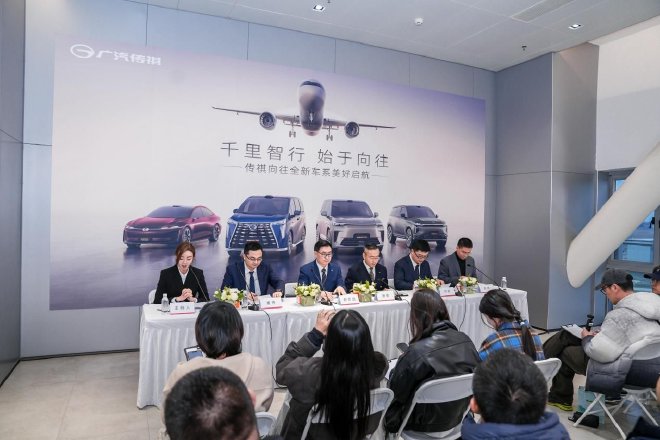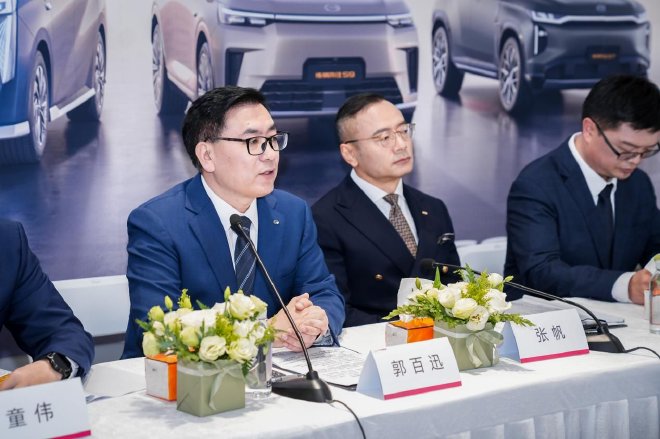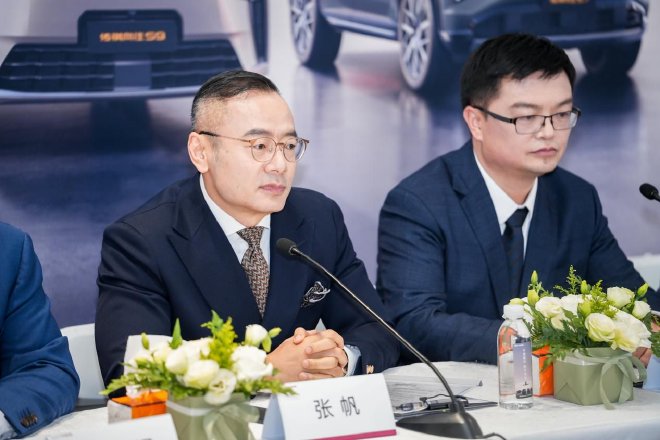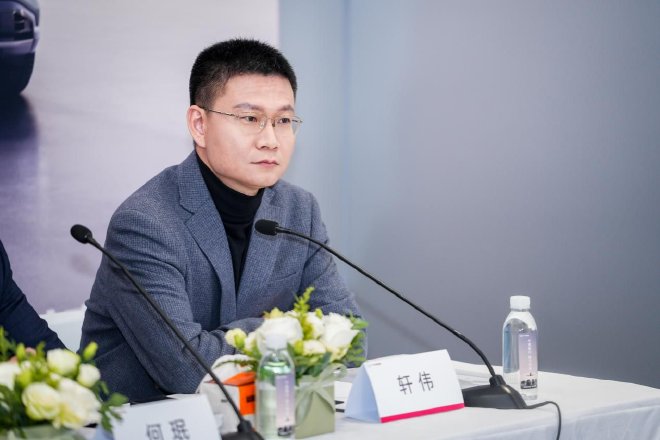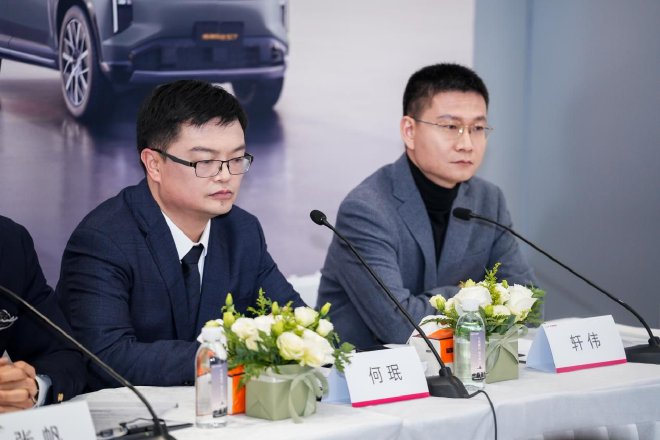On March 7, GAC Trumpchi launched the high-end car series “Trumpchi Xiangwang.” This series aims for a “mainstream, grand, high-quality” market. The first model, the Trumpchi Xiangwang S7, has begun pre-sales. After national subsidies, the price ranges from 194,800 to 234,800 yuan (32460$). The new vehicle targets elite families as a large smart SUV. It offers high-end features in product, design, technology, and service, with advanced smart driving included in all models.
After the press conference, several executives from GAC Group accepted a media group interview. Below is the transcript. Q1: Since GAC launched the Panyu initiative last year, can we see the release of the high-end Aion series as a significant move under this initiative? What is the positioning of the Aion series, and what strategic importance does it hold for GAC Trumpchi?
Last year at the Guangzhou Auto Show, GAC Group announced the three-year “Panyu Action” plan. This plan clarifies the development direction for GAC’s independent brands. GAC Trumpchi embraces the “Panyu Action” and accelerates its shift to new energy. It sets a new goal of “mainstream, elegant, high quality.” Using “four new” as its engine, Trumpchi launches the Aspirations series. The Aspirations series aligns with the brand’s “mainstream, elegant, high quality” positioning. It builds on an all-new multi-energy platform. The series features advanced driving assistance and AI smart cockpit technologies. Compared to existing Trumpchi products, it resembles Huawei’s “Extraordinary Master” and Toyota’s “Crown” series. The Aspirations series offers four new value propositions. First, it delivers a flagship-level driving experience. Second, its design is elegant and creates high perceived value. Third, the intelligent electric technology i-GTEC 3.0 integrates Huawei’s cutting-edge tech and GAC’s R&D strength, placing it at the forefront of Chinese brands. Fourth, it provides round-the-clock smart service, enhancing user experience. In summary, the goal is to create an aviation-grade travel experience for users. By launching the Aspirations series, GAC aims to quickly enter the first tier of new energy vehicles and successfully achieve the three-year “Panyu Action.” Q2: The Aspirations series features significant changes in shape and design. It presents a higher level of sophistication and resonates with advanced driving. From a design perspective, how can we convey this sophistication and high-end feel to users and capture their minds?
Zhang Yuan: In the era of rapid development in new energy and a diverse Chinese market, we face open questions. The media often focuses on how the Chinese automotive industry uses new energy to lead the way. Should design embrace disruptive innovation? In the past 5-6 years, GAC Trumpchi has sought breakthroughs. After facing market setbacks, they reflected and gained insights into user aesthetics and design demands. These demands vary with economic and consumer trends. However, industry and consumer mindsets have begun to balance. They gradually find designs that meet mainstream consumer expectations, summarized as “balanced and grand, instantly captivating; smart living, shaping environments.” In exterior design, “balanced and grand” serves as the mainstream aesthetic principle. The aesthetic design principles of over 100 years can continue. Mainstream users appreciate and accept basic automotive aesthetics. In the new era, “instantly captivating” reflects new technologies, especially smart technologies, in design. This involves details and means: first, integrating high technology into vehicle design; second, ensuring vehicles possess both static and dynamic beauty. For example, headlights can blink, express emotions, and offer customization, allowing user interaction and choice. Third, from a philosophical perspective, smart technology brings the greatest advancement to users and products, transforming mechanical and physical products into something with a soul. Smart cars are safer than human-driven cars. They excel in detection range, reaction speed, and precision. Smart cars enhance the driving experience and capabilities. They are no longer just transportation; they empower drivers like mythical beasts. The design process focuses on making these cars more vibrant and expressive. This concept, “one glance conveys spirit,” shapes new human-car relationships. It showcases the spirit that cars should embody in the intelligent era. In design, the smart cockpit combines human experience with diverse scenarios. Designers now consider more than just comfort, safety, and status. They focus on experience, looking at space, time, and emotional reflection after driving. GAC’s Aion series incorporates these ideas, blending classic automotive aesthetics with smart technology and expanded design principles. This enriches the design philosophy and logic. Q3: GAC’s i-GTEC 3.0 integrates self-developed and Huawei technologies with breakthroughs. As an executor, how did you achieve this? Many users find plug-in hybrids or range extenders sufficient. Why add another system? What experience does it provide?
Mr. Xuan: First, I will answer the second question about the dual-mode vehicle. Last year, GAC Trumpchi launched the EV+ platform, which offers a worry-free solution for new energy. This platform provides users with the best energy solution in the new energy era. Users do not need to choose between plug-in hybrids, extended-range vehicles, or pure electric cars. The i-GTEC 3.0 “one vehicle, dual modes, three uses” solution allows users to enjoy the best energy options without needing to understand the differences between these types. Regarding the collaboration between Trumpchi and Huawei, the i-GTEC 3.0 features four key technology concepts. In terms of the cabin and smart driving, it includes dual-drive cabins and dual-drive smart driving systems. This comprises Huawei’s QianKun smart driving and GAC’s self-developed Wutu smart driving and ADiGO intelligent cabin. These two systems will adapt to user needs and model positioning across different models in the Xiangwang lineup. In addition to the cabin and smart driving, intelligent electric power and AI smart chassis leverage GAC’s power and chassis strengths. They combine with Huawei’s cabin and smart driving to create new scenarios. For example, the AI smart chassis utilizes GAC’s long-standing chassis technology, along with Huawei’s smart driving sensors and systems. The AI energy management in intelligent electric power must maximize the advantages of the engine and hybrid transmission while connecting with Huawei and Trumpchi’s cabin. It recognizes maps and navigation, integrating everything into a fully fused intelligent chassis and electric power system. Q4: In today’s competitive market, how does Xiangwang S7 achieve “what others lack, I possess; what others have, I excel”?
He: GAC Trumpchi offers consumers more than just good value. The S7 stands out. First, it has a stunning exterior. Second, it is very intelligent. Third, it has a deep character. It balances beauty and wisdom. First, the design shines. The color scheme makes the S7 unique. It doesn’t look cheap. The car features many good design elements. The light strip has no breaks and is very long. It can express emotions, earning the name AI Emotion Headlight. GAC excels in design, showcasing its strengths. Second, the intelligent experience is unique. Traditional manufacturers face doubts about their intelligence. The S7, through years of development and partnerships with top suppliers like Huawei, has achieved innovations. It features GAC’s self-developed ADiGO 6.0 smart cockpit and GAC Intelligent Driving. Driving the S7 feels like having two assistants. One is the AI voice assistant “Xiao Qi.” It acts as your voice assistant and friend, powered by a robust vehicle system and two language models. The other is the Intelligent Driving assistant, akin to having a teacher. We encourage everyone to experience the S7’s breakthroughs in intelligence. Third, the quality reflects the big manufacturer’s standards. The S7 showcases these quality advantages. GAC invested in 1,143 test vehicles and real-world scenario experience cars. It resolved all testing and experience issues before launch, ensuring user confidence in purchasing and driving. Q5: In a year of explosive growth for mid-to-large hybrid SUVs, competition intensifies. How do the S7 and S9 position themselves, and what market share do they aim for? Also, I ask Professor Zhang about the “Lanhua” phenomenon in the large SUV market and the “Aihua” phenomenon in the MPV market. From a design perspective, why is this the case? How does GAC Trumpchi’s innovation manifest? He: The S7 positions itself as a mid-to-large, intelligent, all-wheel-drive SUV. Despite fierce competition, GAC Trumpchi is confident. In terms of pricing, GAC shows sincerity and isn’t afraid of competition. Many people lack understanding of Trumpchi’s new energy brand. We want users to experience the product first, including its intelligence, dual-mode capabilities, and luxurious interior. After understanding, they will see that this car is not particularly cheap. Zhang: Regarding the “Lanhua” question, the S7’s design targets urban, rugged users. Due to platform settings, the body dimensions and proportions have limited adjustability. The issue of design homogenization arises from the information age. The internet leads designers and users to share similar information. User demands and designer perceptions converge. Car companies target mainstream users and prioritize sales, leaving little room for trial and error. This requires a precise grasp of mainstream aesthetics and successful models. For example, the S7 features a prominent black decorative panel and vertical trim. GAC Trumpchi does not imitate; it draws inspiration from military aesthetics to enhance presence. These elements are essential to the design. Additionally, GAC integrates intelligent and new energy characteristics into its vehicles, giving them a dynamic spirit that reflects GAC’s design identity. GAC Trumpchi is known as an MPV expert. Huawei leads in advanced intelligent driving. Their collaboration strengthens the core advantages of the M8 model, reinforcing Trumpchi’s dominance in the MPV market. Mr. Tong: The partnership between Huawei and Trumpchi combines Huawei’s advanced intelligence with Trumpchi’s four strengths: R&D, technology, quality, and service. The M8 was one of the first models to collaborate with Huawei, launching the Pioneer version in early February last year, which received widespread acclaim. Alongside the Pioneer version, GAC Trumpchi deepened its collaboration with Huawei and introduced the second M8 this year. This model features the latest Huawei HarmonyOS and advanced driving hardware. It offers the most software and the most comprehensive ecosystem. The hardware includes the latest 4D millimeter-wave radar. The software introduces the VPD parking assist feature, addressing parking anxieties at airports. Trumpchi has an 11-year history in vehicle manufacturing. The M8, E9, M6, and E8 have sold over 730,000 units, with the large and mid-size M8 and E9 accounting for over 420,000 units. This significant volume results from designs that incorporate Chinese elements. The M8 features jade-like tail lights and a lion-inspired front. The M8 also showcases the “One品麒麟” design. GAC Trumpchi continuously iterates and upgrades its products based on feedback from 420,000 users to meet their needs. The E9 Welfare version includes the country’s first detachable welfare seats, emphasizing care for family. Trumpchi and Huawei collaborate to refine design concepts, scenarios, and experiences. This approach represents the future direction of development.
